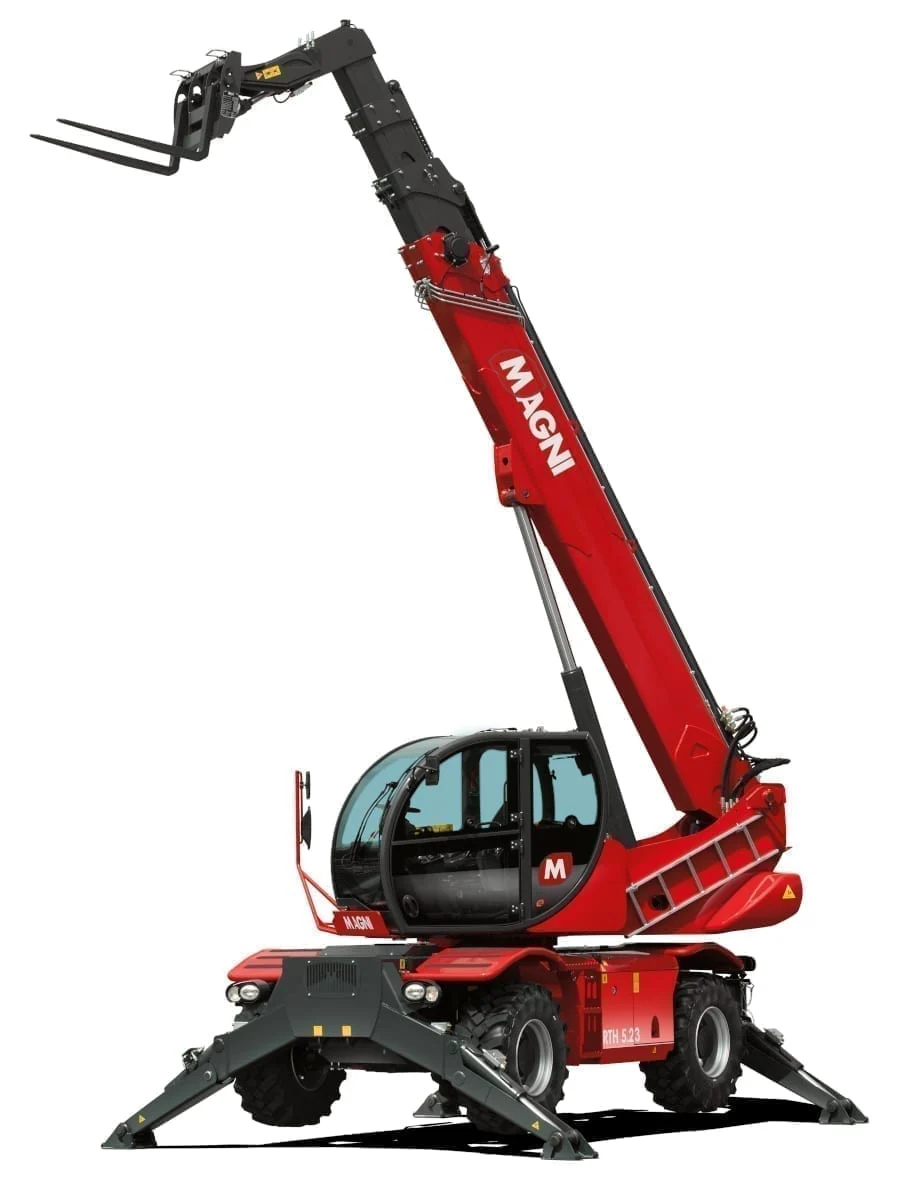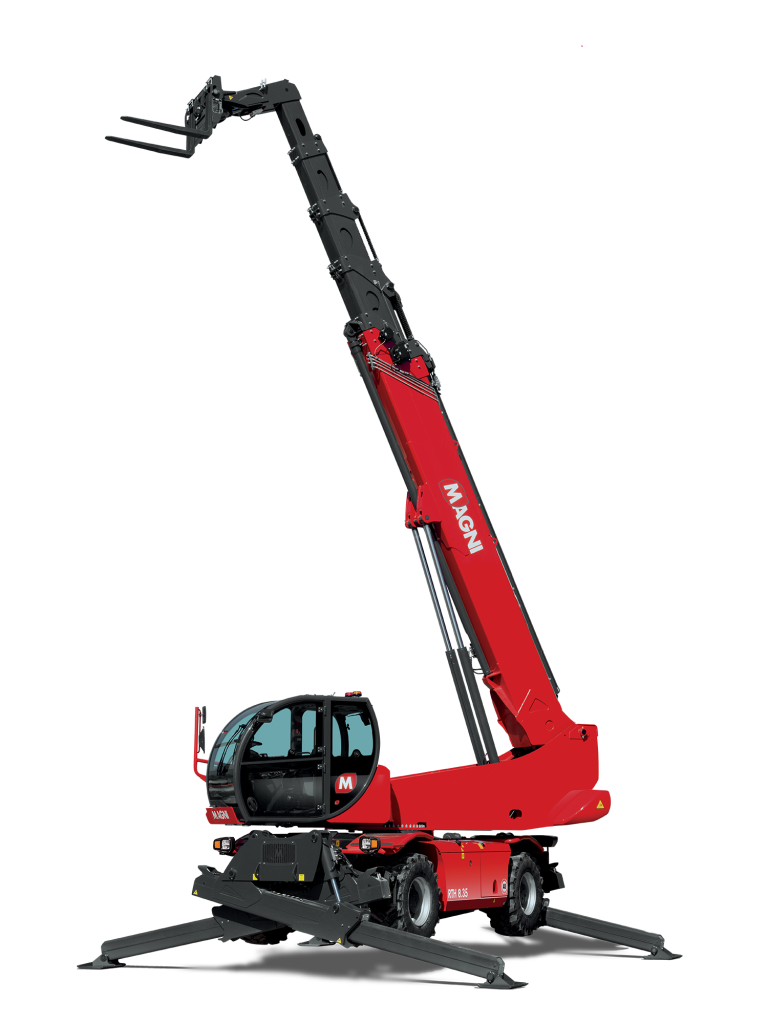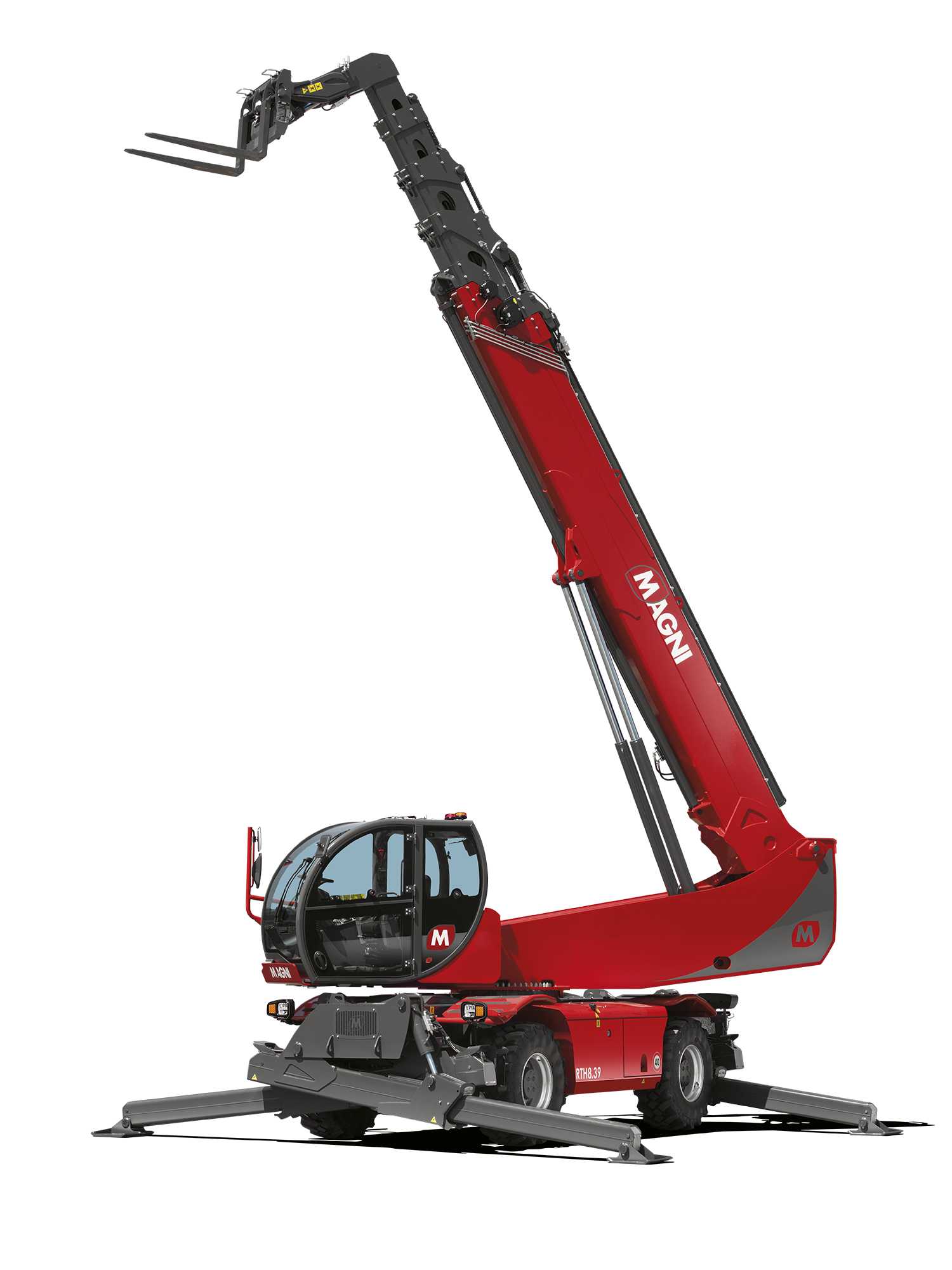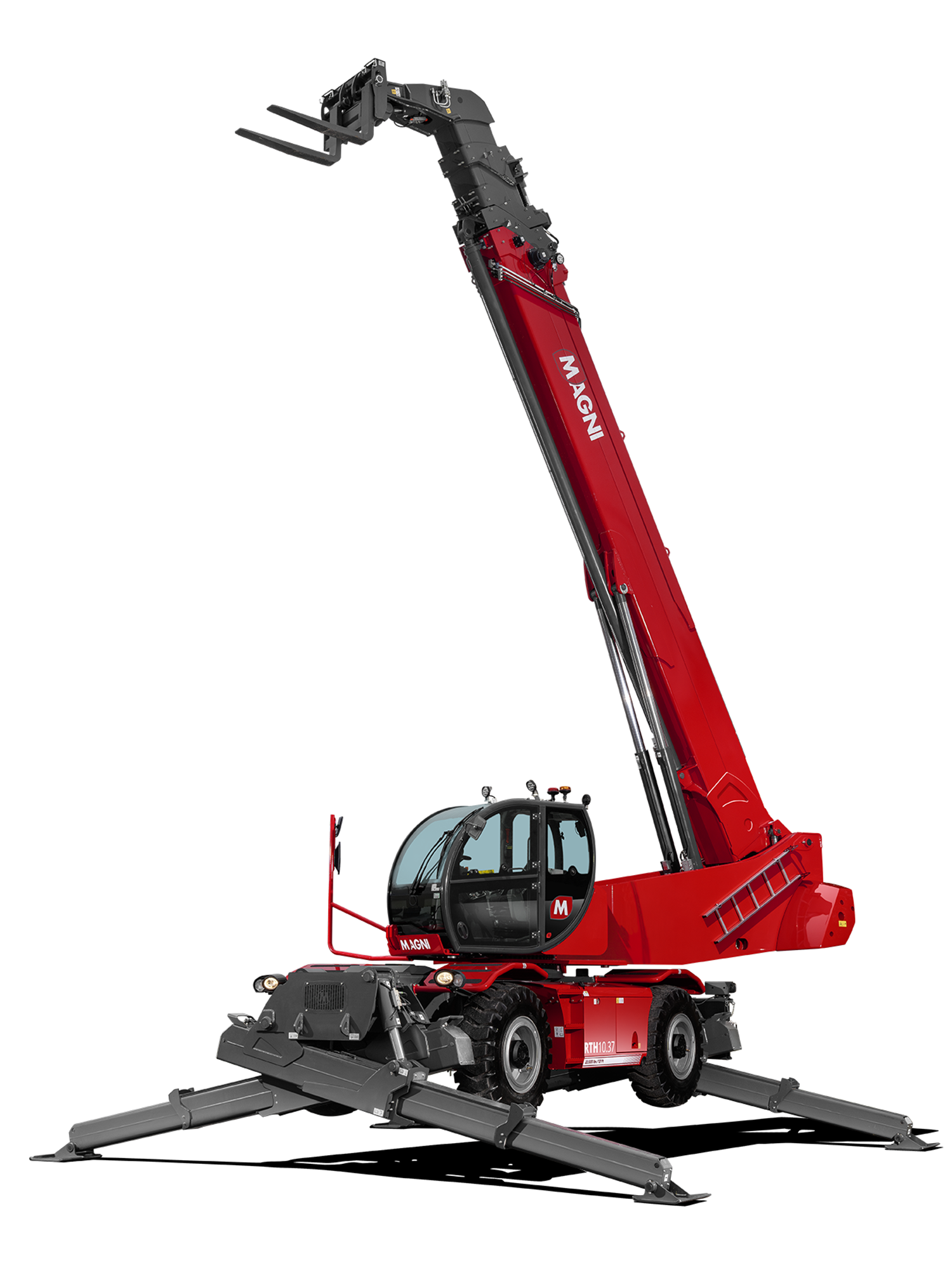A rotating telehandler is used for heavy lifting, material handling, and accessing hard-to-reach areas. The 360-degree rotating turret allows it to perform multiple tasks, such as loading, lifting, and positioning materials. These machines are popular in construction, agriculture, and industrial settings.
Magni
Rotating Telehandler
The rotating telehandlers are extremely versatile and flexible machines. They are used for many applications being able to equip various accessories such as forks, winches and platforms and being equipped with 360 ° rotation. All Magni lifts work in complete safety, thanks to the patented load control system that detects the risks of overload during use and inhibits further aggravating movements. Reliability and functionality found their embodiments in these 3-in-1 machines.
A rotating telehandler works by using a telescopic boom that extends and lifts materials. What sets it apart is its ability to rotate 360 degrees, allowing the operator to move loads in any direction without repositioning the machine. This feature enhances efficiency on tight or busy job sites.
The maximum lift height of a rotating telehandler depends on the model. Most rotating telehandlers can lift between 18 and 46 metres, making them ideal for high-reach tasks on construction sites. Be sure to check specific model specifications for exact height capacities.
Rotating telehandlers are compatible with a wide range of attachments, including forks, buckets, winches, jibs, and man baskets. These attachments increase the versatility of the machine, allowing it to handle different jobs such as lifting, digging, and personnel lifting.
Yes, rotating telehandlers are designed for rough terrain. They feature all-terrain tyres and stabilisers, providing stability and traction on uneven surfaces. This makes them perfect for construction sites, farms, and industrial areas with challenging ground conditions.
Rotating telehandlers have a lifting capacity that varies by model. Most can handle loads between 4 and 13 tonnes. Check the model specifications to ensure you choose a telehandler that meets your lifting needs for your project.
Rotating telehandlers are equipped with advanced safety features, including load management systems, stabilisers, and overload sensors. Some models also offer 360-degree cameras, allowing operators to monitor their surroundings and ensure safe operation.
Yes, you typically need a high-risk work licence or a telehandler licence to operate a rotating telehandler. This can vary by region, so it’s important to check your local requirements to ensure compliance before using the machine on a job site.
Rotating telehandlers should be serviced regularly to maintain optimal performance. It’s recommended to follow the manufacturer’s service intervals, typically every 500 to 1,000 hours of operation. Regular maintenance includes checking hydraulics, stabilisers, tyres, and attachments to ensure safety and efficiency.
Fill the form below, and one of our team members will be in touch.























